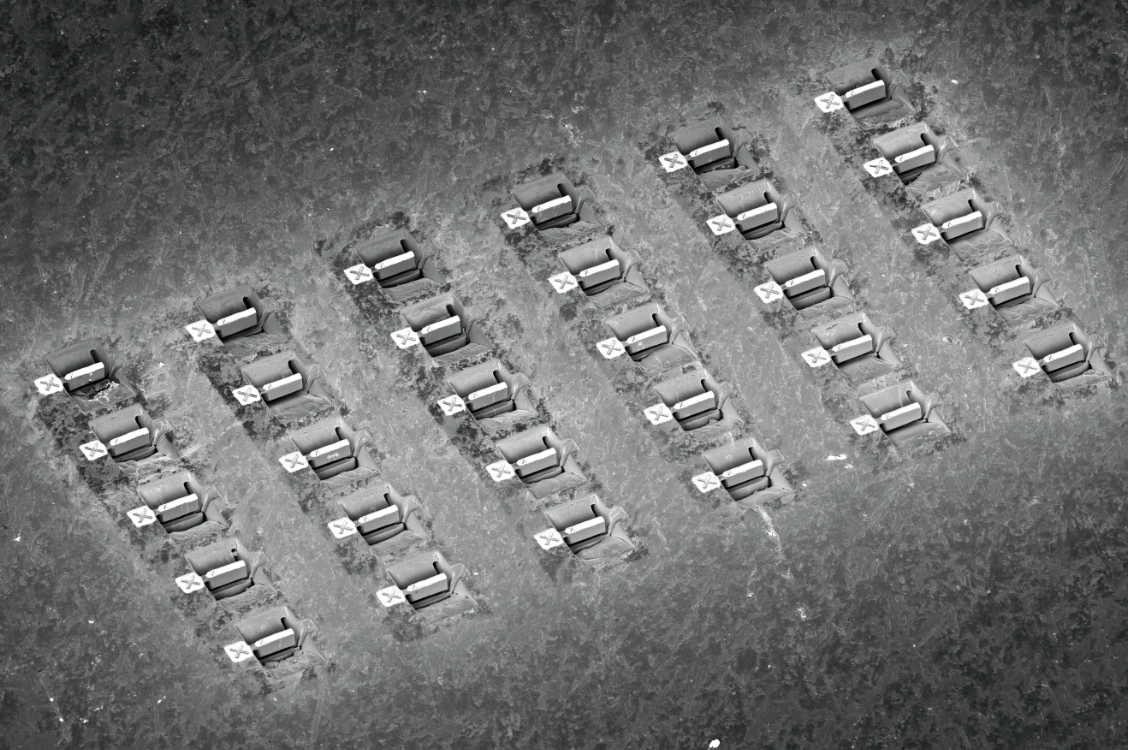Presented by Thermo Fisher Scientific
Towards “Damage-Free” TEM specimen preparation by Focused Ion Beam without Gallium
Date: November 23, 2021
Time: 11:00AM - 12:00PM
You must be registered to participate!Focused ion beam (FIB) has been widely used in materials science. Different types of ions (Argon, Gallium, Xenon, Oxygen, Nitrogen) have their unique characteristics for various applications. Plasma Xenon ion beam has been greatly accepted by the FIB microscopy community providing the advantages of high sputtering yield, high current milling at 30 keV for a large 3D volume data acquisition, and correlated microscopy applications. Reactive oxygen ion beam dramatically improves sample milling quality for carbon-carbon bonding hard or soft materials by smoothing the cut-face very effectively during sputtering.
The focus of this presentation is on FIB TEM specimen preparation. Preparation of "damage-free" TEM specimen is one of the challenges of traditional gallium (Gallium FIB, G-FIB). Our question is, if ions other than the gallium ion are used, what will happen to the specimen besides gallium-free ion implantation? How can we predict the damage of Argon, Gallium, and Xenon ions to the sample?
In this presentation, we start with introducing ion solid interactions, followed by defining ion beam application domains classified by ion projected range. We explain sample amorphous material formation induced by ion-atom knock-on damage effect before presenting a TEM specimen sidewall damages by analysis of the simulation data.
During FIB sample preparation, ions bombard solid materials over a wide energy range from a few hundred electron-volts to 30 keV. By analyzing the simulation data generated by SRIM (Stopping and Range of Ions in Matter), including Ion range, sputter yield, atomic displacement, and vacancy damage density, this report provides clear guidance on which ion species to choose for what application domain.
With actual experimental trials guided by investigation of ion-solid interaction SRIM data, we have shown results of really close to “damage-free” TEM specimen preparation for HR (S)TEM by multi-ion source plasma FIB Hydra low energy argon ion beam at 500 eV.
We hope this presentation encourages gallium-focused ion beam and even TEM user groups to explorer a new FIB application domain by applying multi-ion sources plasma ion beam DualBeam microscopy for gallium-free TEM specimens preparation.
With introduce high-performance low energy focused argon ion beam to DualBeam, we are approaching to “damage-free” TEM specimen preparation domain.

Presented by Thermo Fisher Scientific
Follow Thermo Fisher Scientific on:
- Chengge Jiao, Staff Scientist, Applications Development, Thermo Fisher Scientific
- Brandon Van Leer, Product Marketing Engineer SEM / DualBeam, Thermo Fisher Scientific
Focused ion beam (FIB) has been widely used in materials science. Different types of ions (Argon, Gallium, Xenon, Oxygen, Nitrogen) have their unique characteristics for various applications. Plasma Xenon ion beam has been greatly accepted by the FIB microscopy community providing the advantages of high sputtering yield, high current milling at 30 keV for a large 3D volume data acquisition, and correlated microscopy applications. Reactive oxygen ion beam dramatically improves sample milling quality for carbon-carbon bonding hard or soft materials by smoothing the cut-face very effectively during sputtering.
The focus of this presentation is on FIB TEM specimen preparation. Preparation of "damage-free" TEM specimen is one of the challenges of traditional gallium (Gallium FIB, G-FIB). Our question is, if ions other than the gallium ion are used, what will happen to the specimen besides gallium-free ion implantation? How can we predict the damage of Argon, Gallium, and Xenon ions to the sample?
In this presentation, we start with introducing ion solid interactions, followed by defining ion beam application domains classified by ion projected range. We explain sample amorphous material formation induced by ion-atom knock-on damage effect before presenting a TEM specimen sidewall damages by analysis of the simulation data.
During FIB sample preparation, ions bombard solid materials over a wide energy range from a few hundred electron-volts to 30 keV. By analyzing the simulation data generated by SRIM (Stopping and Range of Ions in Matter), including Ion range, sputter yield, atomic displacement, and vacancy damage density, this report provides clear guidance on which ion species to choose for what application domain.
With actual experimental trials guided by investigation of ion-solid interaction SRIM data, we have shown results of really close to “damage-free” TEM specimen preparation for HR (S)TEM by multi-ion source plasma FIB Hydra low energy argon ion beam at 500 eV.
We hope this presentation encourages gallium-focused ion beam and even TEM user groups to explorer a new FIB application domain by applying multi-ion sources plasma ion beam DualBeam microscopy for gallium-free TEM specimens preparation.
With introduce high-performance low energy focused argon ion beam to DualBeam, we are approaching to “damage-free” TEM specimen preparation domain.

Presented by Thermo Fisher Scientific
Follow Thermo Fisher Scientific on:


